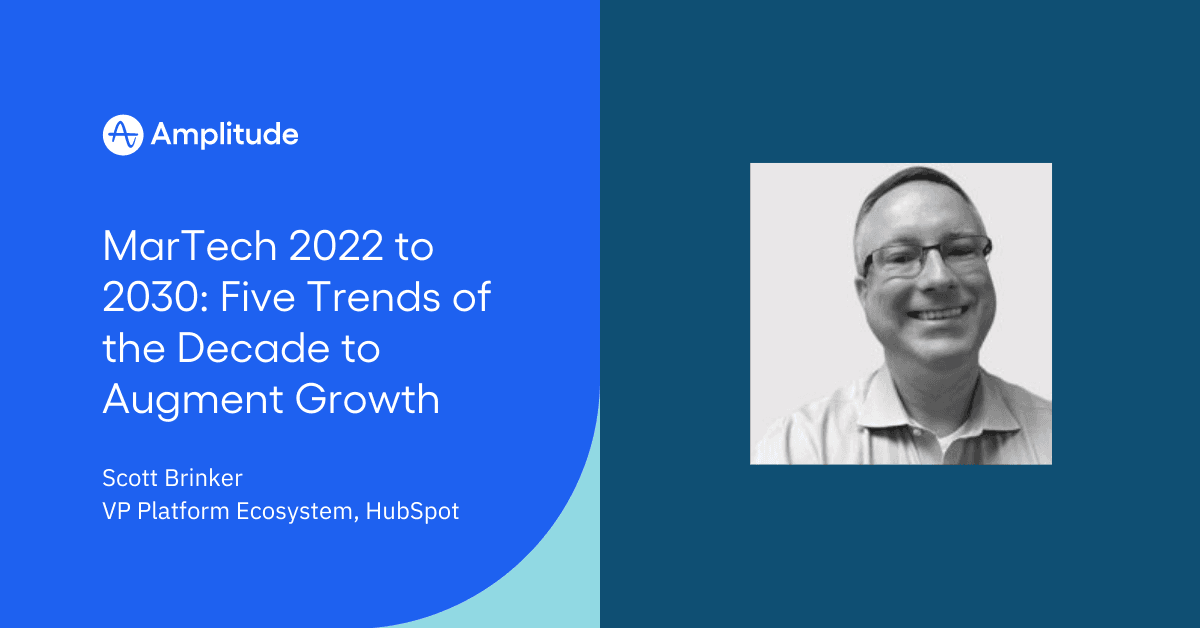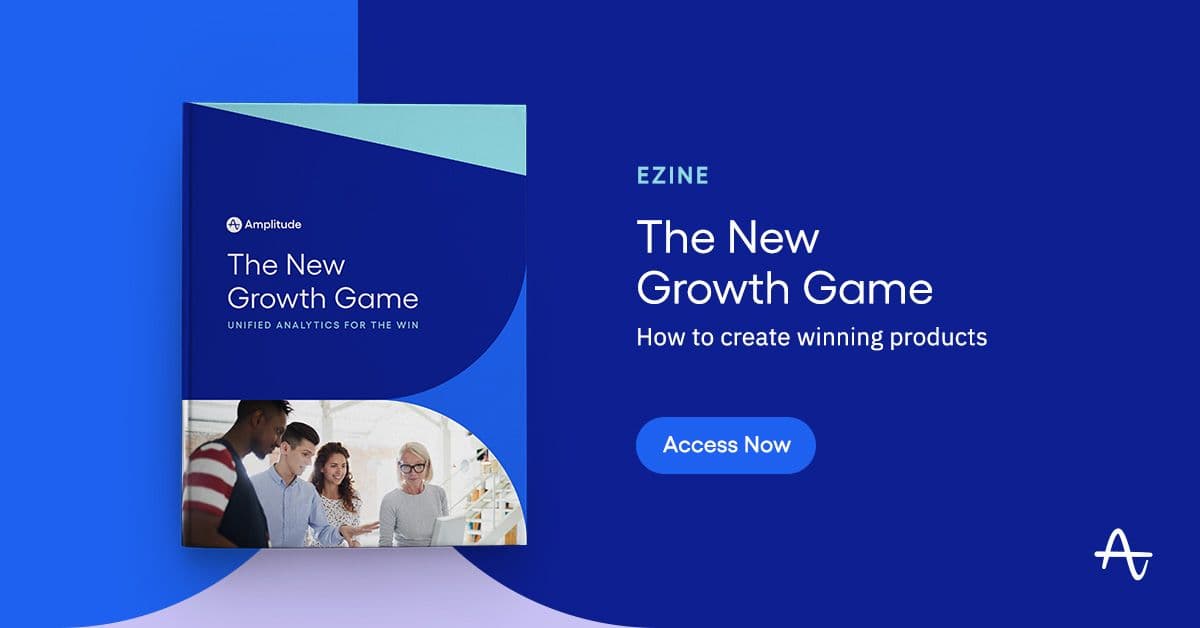Scott Brinker on 5 MarTech Trends of the Decade to Accelerate Business Growth
Look out for these five MarTech trends already influencing the marketing industry as we know it. Spoiler alert: The relationship between marketers and AI is only getting better.
The core principles of growing businesses have stayed the same over the years, despite advances in technology. But more advanced tech means that companies must adapt their strategies to keep up. To do that, they need to identify trends they can use for sustainable business growth.
During Amplify 2022, Amplitude’s annual conference, Scott Brinker, the Godfather of MarTech and Vice President of platform ecosystem at HubSpot, shared Five Trends of the Decade to Augment Growth and why he thinks these trends are essential for businesses everywhere.
These five trends are already underway and will change the way MarTech works over the next decade:
- Adoption of no-code tech
- Rise of platforms, networks, and marketplaces
- The rapid growth of apps
- The shift from big data to big ops
- Greater harmony between humans and machine
1. Adoption of no-code tech
No-code tech has become a significant tool for organizations of all sizes, and this adoption isn’t slowing down any time soon. Gartner’s research predicts that “by 2025, 70 percent of new applications developed by organizations will use low-code or no-code technologies, up from less than 25 percent in 2020.”
No code goes beyond app development. Solutions for creating website forms, landing pages, chatbots, and workflow processes are part of the no-code movement that enables building without writing a line of code.
In Scott’s words, “When I talk no-code, I mean this in the very broadest sense. It’s not just about building apps. It’s really about any of these tools that let general business users and marketers create things.”
With that distinction, we can say that no-code tech platforms have gone from “simple” use cases like building a landing page to more sophisticated use cases. Brinker continues:
“Over time, these things improve, and then they start to serve mid-range use cases, and eventually high-end use cases… we start to see people using these tools to build more sophisticated things like a partner directory. In fact, now there [are] tools where a large number of sites out there for major companies are being built entirely on no-code platforms.”
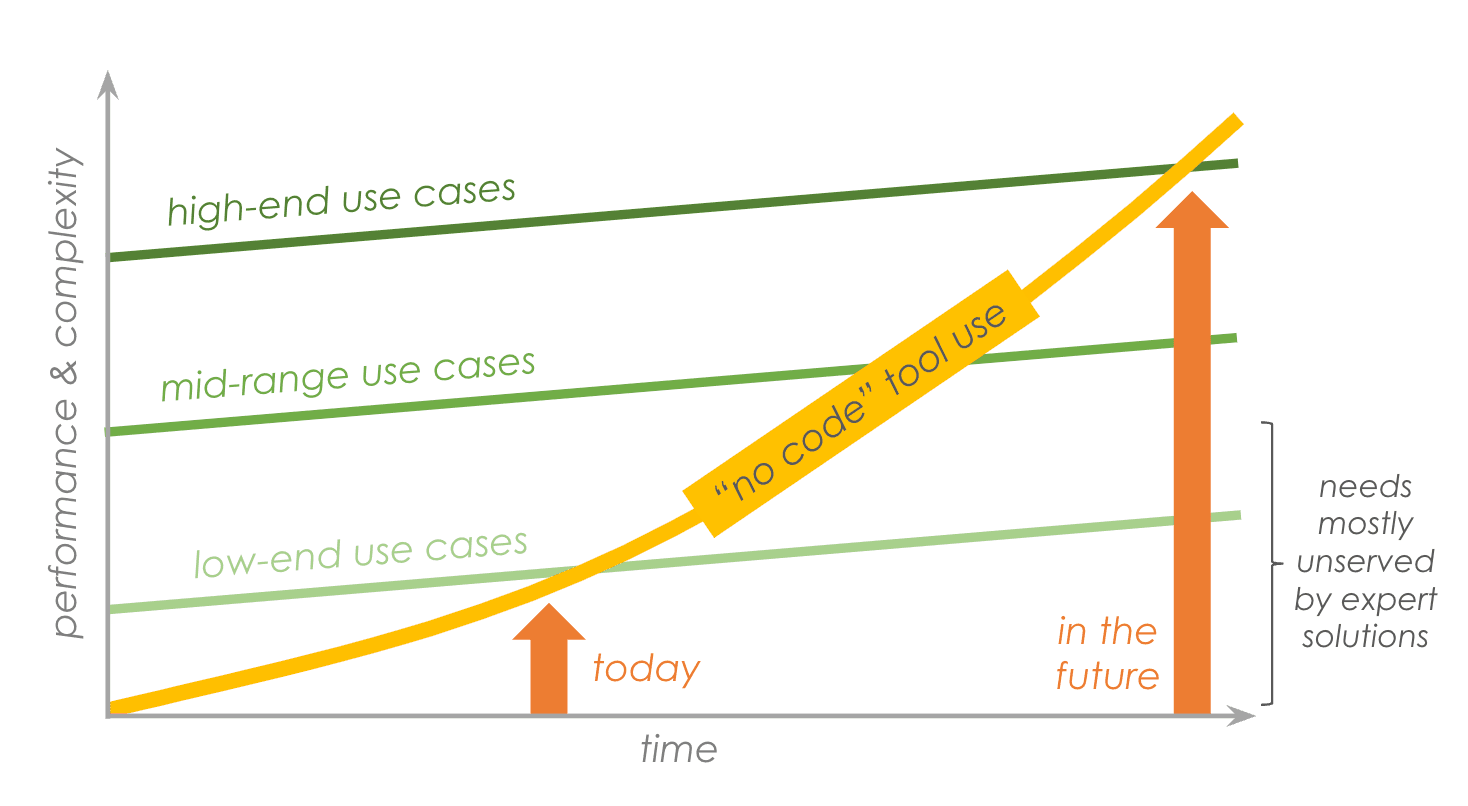
Note: All images used throughout this blog post are provided by Scott Brinker.
This sophistication has boosted productivity across different departments and teams and has driven the adoption of no-code tech. Nobody wants to spend weeks developing an app when they can achieve the same results with less development time. And according to Scott, this applies to any task:
“A great example would be data analysis. Imagine a marketer has a question and is thinking, ‘I wonder what the data on this was.’ If they had to take a ticket and get in line and wait three weeks for a specialized analyst… a lot of times, the marketer would just say the data wasn’t that important… What I think you’ll see is ultimately even the experts start to leverage more and more of these no-code tools as a way to accelerate what they do.”
No-code tech leads to a decentralized self-service model that has several benefits, including increased speed and creativity.
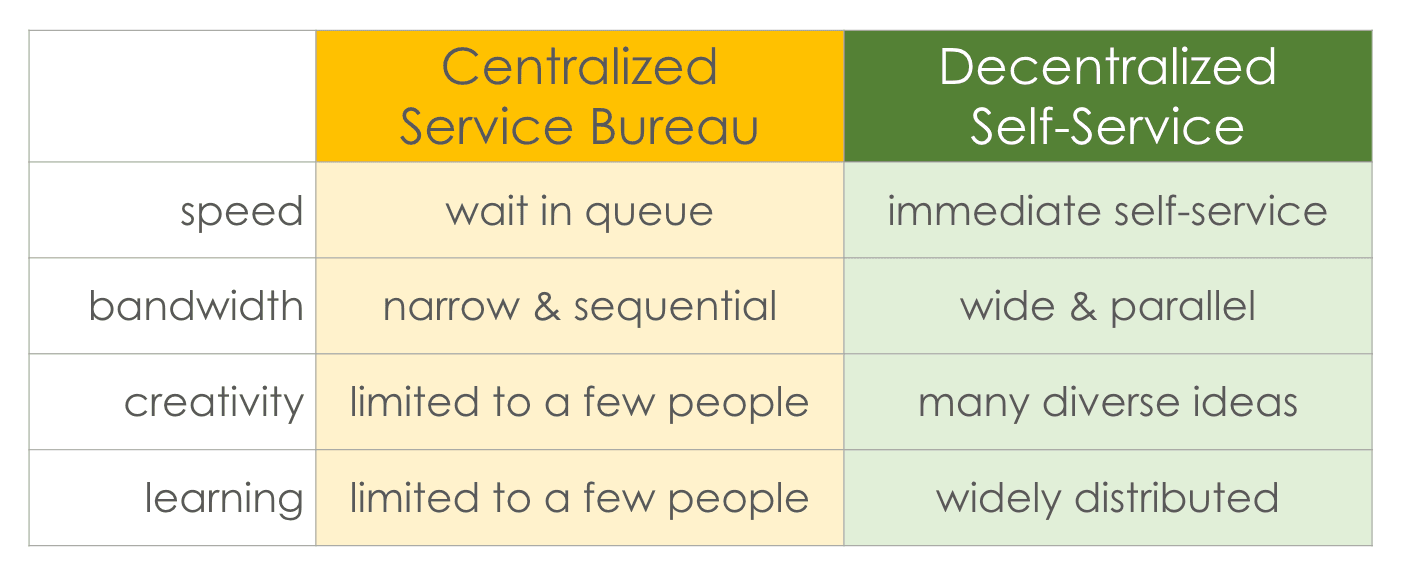
2. Rise of platforms, networks, and marketplaces
According to Brinker, “Platforms, networks, and marketplaces are everywhere in marketing.”
- Platforms are software that enable a variety of apps, campaigns, and workflows to run on one common foundation. Examples include iOS, HubSpot, Salesforce, and Shopify.
- Networks facilitate connections, interactions, and asset sharing, whether that’s content, data, or knowledge among participants in a community. Examples are Facebook, LinkedIn, Slack, Hootsuite, Microsoft Teams, and Twitter.
- Marketplaces match producers and consumers in a certain market, facilitating discovery, evaluation, transactions, and service delivery. App stores, Airbnb, AdWords, Etsy, and Fiverr are examples of marketplaces.

Brinker further explains that MarTech vendors not only let marketers buy and use their platforms, networks, and marketplaces, but they also help them engage and integrate with other platforms, networks, and marketplaces—and even create their own. The result is the widespread growth of platforms, networks, and marketplaces.
For example, Google provides the platform for developers to create Android apps. It also gives developers and other people networks like Gmail, Duo, Hangouts, and Meet for interactions. And it matches app owners with users on its marketplace, the Google Playstore.
Scott argues that this proliferation of platforms, networks, and marketplaces is also happening in our supply chains, internal organizations, and engagements with customers. There’s no running from them—you’ll need to harness the power of platforms, networks, and marketplaces for the long-term growth of your organization.
3. The rapid growth of apps
For MarTech, over 100 apps existed when Brinker released the first version of Marketing Technology Landscape in 2012. In 2022, that number is 9,932. That’s a growth of over 6,000 percent in the past decade, but it’s still only a tiny fraction of the growth expected in the general app landscape.
IDC estimates that over 500 million apps will be deployed natively by 2023 alone. And no-code tech will play an important role in app expansion. For example, Brinker mentioned Google’s AppSheet, a no-code builder for small internal apps, had over 3.8 million apps created and deployed on the platform at the time of his talk.
But why isn’t there more app consolidation in MarTech? Brinker explains that there is consolidation, but it drives even more app creation. The key is understanding the spectrum of cloud software:
- Cloud platforms: Large cloud platforms are built for general purpose infrastructure and exist in a consolidated industry with players like AWS, Microsoft Azure, and Google Cloud.
- Service platforms: Service platforms are API service providers like Twilio, Stripe, and Auth0.
- App platforms: Large app platforms like Salesforce, HubSpot, and Shopify are built for general domains and have their own app ecosystems with developer extensibility.
- Specialist apps: Specialist apps are built for specialized domains and don’t have app ecosystems. Examples include PandaDoc, Calendly, and SurveyMonkey.
- Custom apps: Smaller custom apps are built for business-specific logic and exist in the millions. Think websites, mobile apps, and internal apps a company develops for itself.
Developers are building specialist apps and custom apps on the shoulders of the giants that came before them. It mimics what’s already happening on mobile phone platforms, where Android and iOS consolidated the market, but opened themselves up for developers to build millions of apps on top.

4. The shift from big data to big ops
An IDC report sponsored by Seagate forecasted that the size of the global datasphere will reach 163 ZB (zettabytes), or 163 trillion gigabytes, in 2025. But much of that data is unused. Enterprises use only 32 percent of the data available to them, so Brinker predicts that more businesses will look for ways to leverage data in their daily operations.
He likened this shift to the saying, “data is the new oil,” which he said is wrong. The better phrase should be “data is the new oil paint.” There’s little value in the data itself because data won’t tell you what to do. Value is created from what you do with the data—the same way oil paints create art that sells for millions of dollars.
“It’s one thing to just store the data in a big data lake somewhere in the sky. It’s another thing when we create reports from it, now we analyze it, now we’re making decisions on it, and now we’re executing those decisions.” That’s how people harness the value of data.
However, because companies have lots of data, Brinker says, “This process of analyzing, deciding, and executing on data isn’t done in human time anymore. It’s done by algorithms… And this takes us into a very different place.”
Organizations are looking for ways to handle all the data they have because they often have different apps, automations, and analyses running concurrently in different departments. As Scott says, the increase in data has come with “exponential growth in the number of interactions with data.” As a result, organizations are moving from big data to big ops.
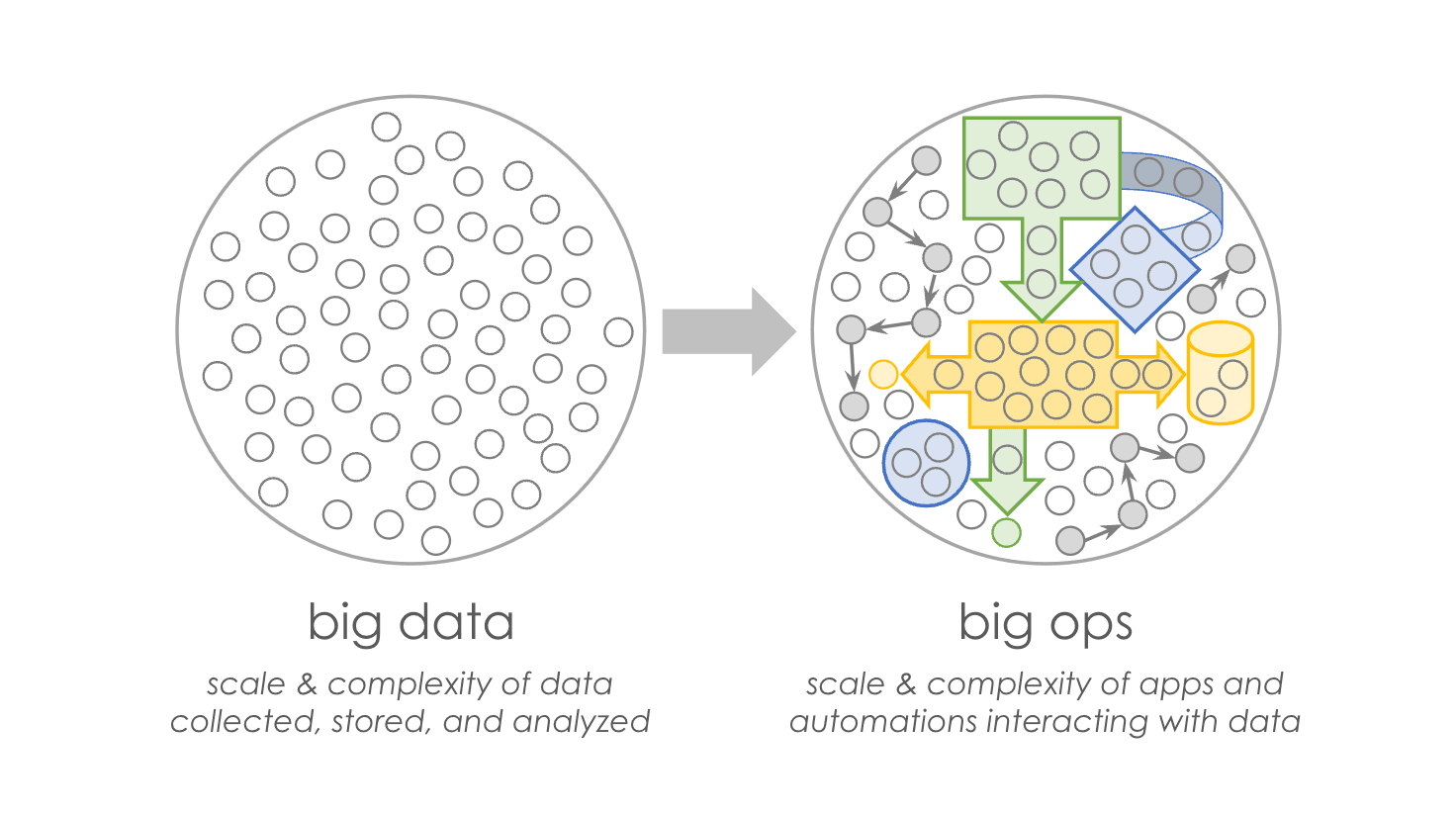
This trend is evident in the growth of departmental ops roles at companies. Scott says it’s no longer just “marketing ops, dev ops, or product ops; it’s data ops, revenue ops, sales ops, partner ops, and so on.” The new challenge is to connect ops functions, both in terms of team coordination and data management. For example, ops teams will need to figure out how to address data issues across:
- Regulatory compliance
- Bias in AI and machine learning data
- Fairness in automated algorithms
- Data ethics and ethical algorithms
These challenges aren’t insurmountable, but marketing ops in particular should diligently think through them when they arise.
5. Greater harmony between humans and machine
The relationship between humans and AI is currently a bumpy one. A 2020 survey shows that 75 percent of younger marketers between the age of 25 to 40 admit they’re “somewhat” or “very concerned” that AI and machine learning would limit their personal growth.
The fear, as Brinker puts it, is that someday “as machines get smarter and smarter at what they do, we’ll run out of tasks for humans.” However, he believes that “the amount of work we’re turning over to machines will accelerate tremendously, but there’s so much we can build on top of this.”
He encourages us to think about “the growth in what human marketers become capable of doing… going back to that first trend of no code.” AI and machine learning power many no-code solutions, and we know from the first trend what that means for productivity. More free time would ultimately lead to more creativity, innovation, and idea execution.

Over time, marketers can take on more projects with the aid of AI and machine learning that wouldn’t have been worth the manual effort but are otherwise valuable endeavors. For example, optimizing email send times would take someone hours using a spreadsheet and not yield a worthwhile ROI, but an ML algorithm can do the same task instantaneously.
So while AI will certainly help us do most of our work in the future, it’ll also help us get better and more efficient at what we do. And, as Scott says, the intersection of humans and automation will be “using AI and machines to help us identify the most valuable opportunities for us to do meaningful human engagement.”
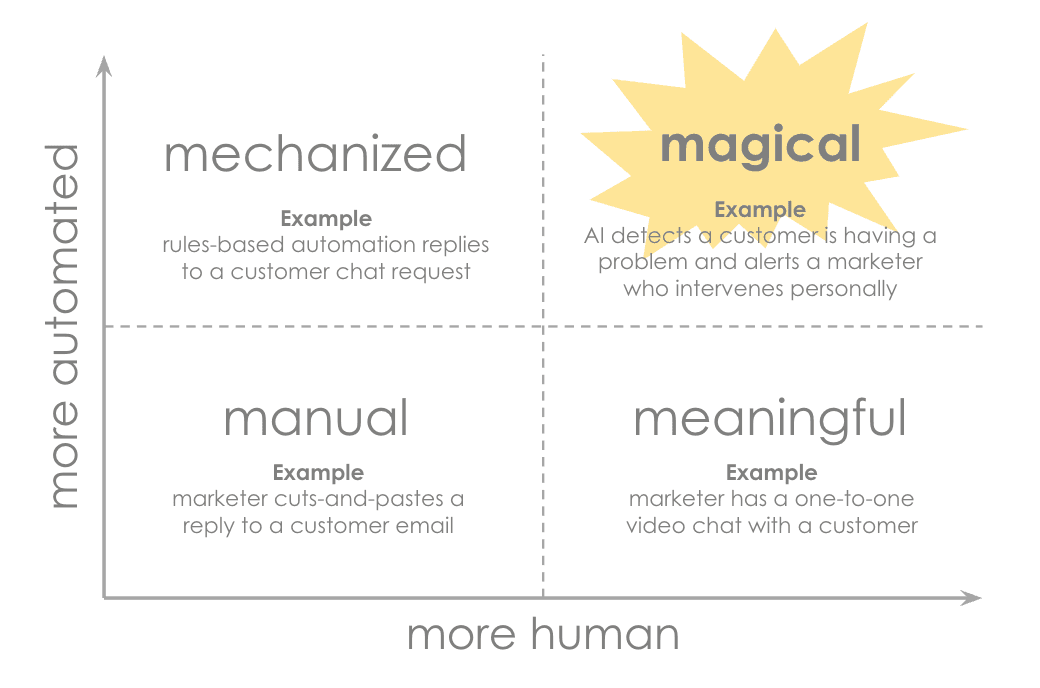
Prepare for growth
Not all of these trends will apply to your specific circumstance, depending on your business and industry. However, in Scott’s words, they are “a tremendous opportunity for all of us in the room to rewrite new playbooks of how marketing is done.”
If you enjoyed this recap, watch Scott Brinker’s full session along with other product, marketing, and data talks from Amplify 2022.

Noorisingh Saini
Global Content Marketing Manager, Amplitude
Noorisingh Saini is a data-driven marketer managing global content marketing at Amplitude. Previously, she managed all customer identity content at Okta. Noorisingh graduated from Yale University with a degree in Cognitive Science.
More from Noorisingh
